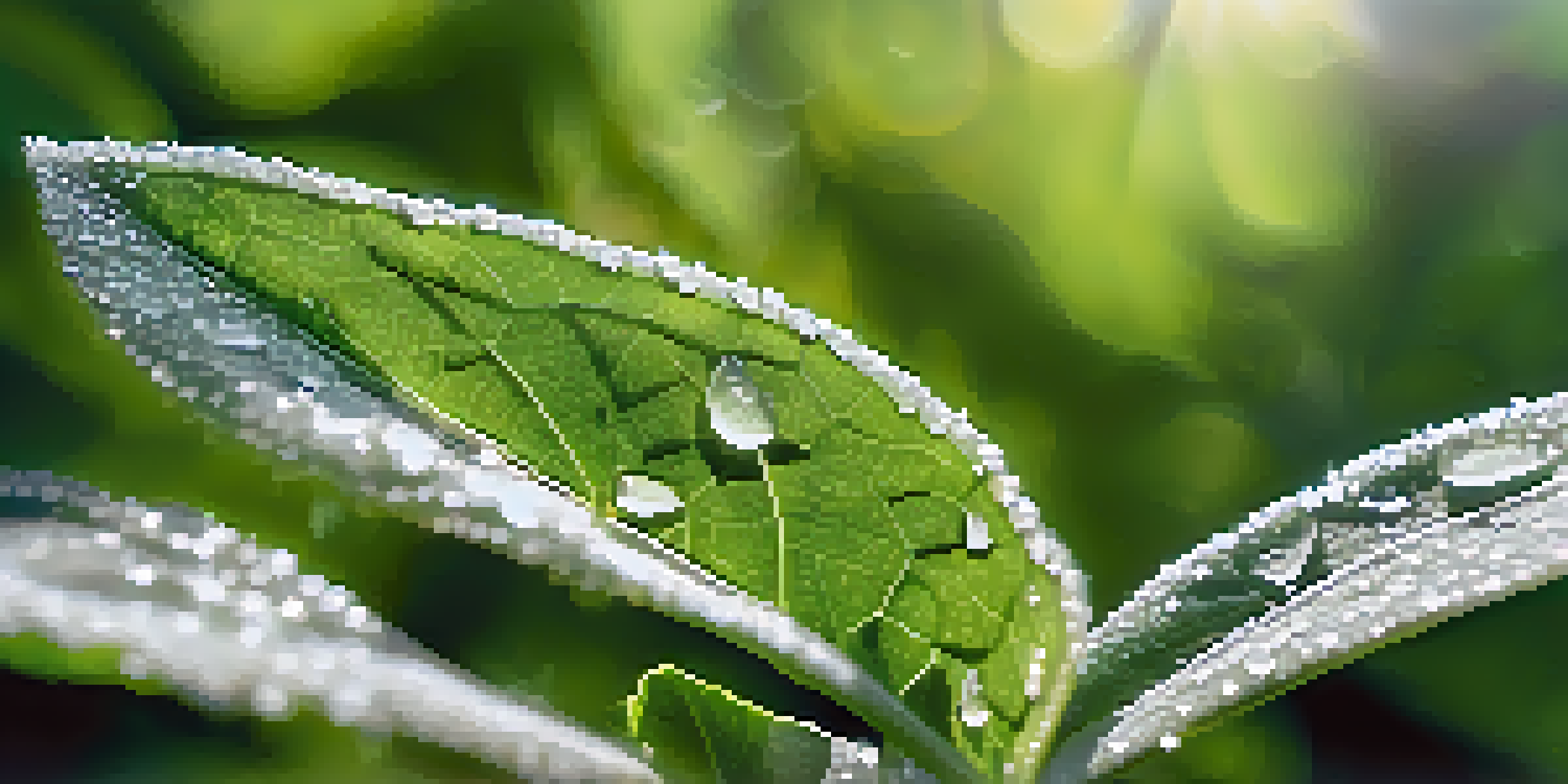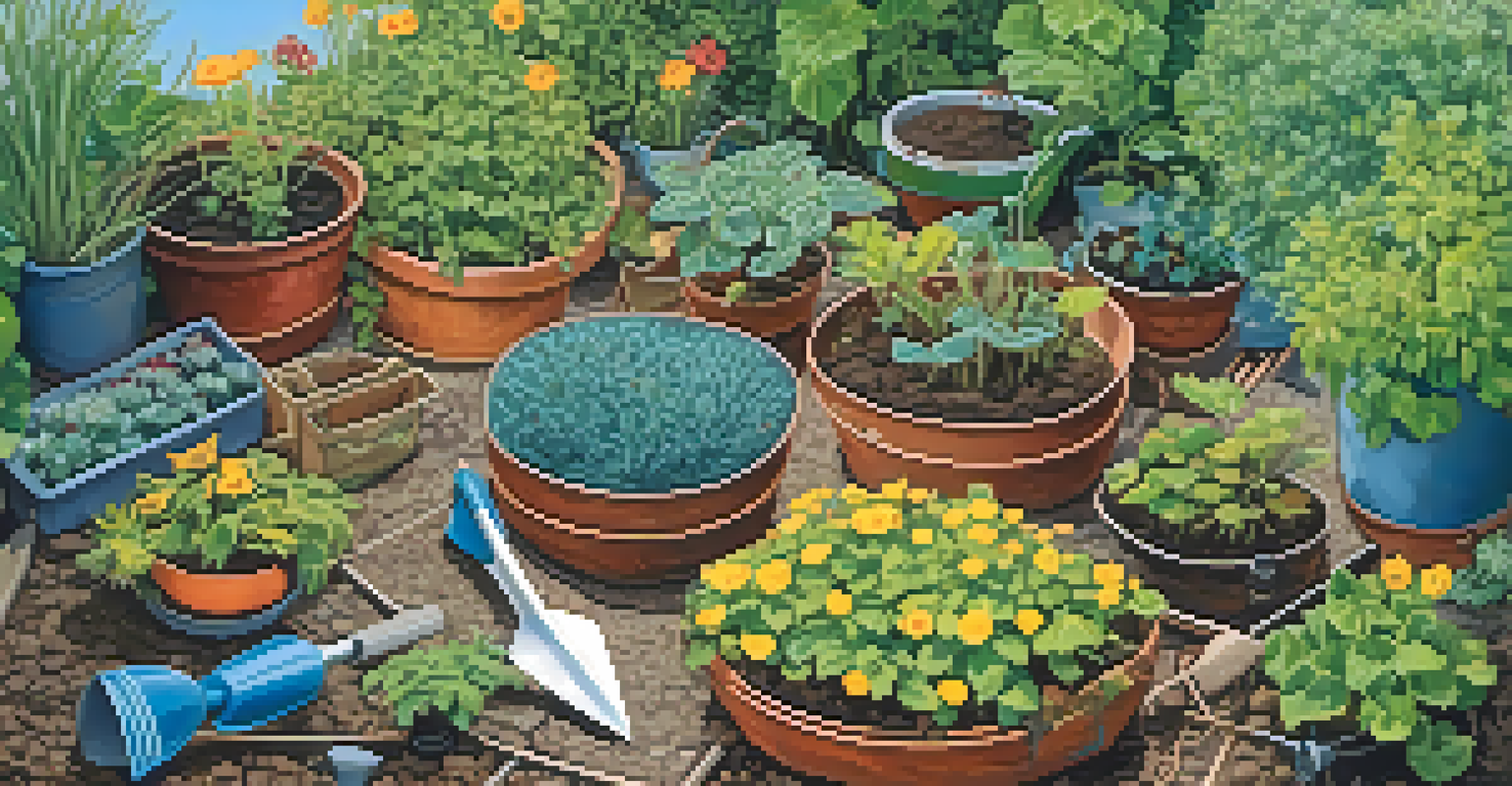Recognizing the Signs of Powdery Mildew in Your Garden

Understanding Powdery Mildew: What It Is and Why It Matters
Powdery mildew is a fungal disease that often affects garden plants, characterized by a white, powdery coating. It thrives in warm, dry conditions and can spread quickly if not addressed. Understanding this disease is crucial because it can severely impact plant health and yield.
An ounce of prevention is worth a pound of cure.
The fungus typically targets the leaves, stems, and buds of plants, which can lead to stunted growth and even death if left untreated. Early recognition is key, as this can mean the difference between a manageable problem and a garden-wide epidemic. Knowing what to look for will empower you in your gardening efforts.
This article will guide you through the signs of powdery mildew, helping you to spot potential issues before they escalate. By being informed, you'll be better prepared to maintain a healthy and vibrant garden.
Common Symptoms of Powdery Mildew in Your Plants
One of the first signs of powdery mildew is the appearance of white or grayish spots on the leaves. As the disease progresses, these spots can expand and form a more uniform powdery coating. This can often be mistaken for dust, but a closer look will reveal the distinct fungal growth.

In addition to the visual signs, affected plants may show signs of wilting or yellowing leaves. If you notice this, it’s a strong indication that something is wrong. Plants may also exhibit stunted growth, which can be frustrating for avid gardeners eager to see their plants thrive.
Recognize Powdery Mildew Early
Early detection of powdery mildew is crucial, as it allows gardeners to take timely action to prevent severe damage to their plants.
Another common symptom is the curling or distortion of leaves, which can hinder photosynthesis. By being aware of these symptoms, you can take timely action to protect your plants from further damage.
Environmental Conditions That Favor Powdery Mildew
Powdery mildew thrives in specific environmental conditions, primarily warm temperatures and high humidity. Gardens that are crowded or lack proper air circulation are particularly susceptible, as moisture can linger on plant surfaces. This makes it a common issue in greenhouses or densely planted areas.
Gardening is a way of showing that you believe in tomorrow.
Additionally, plants that are over-fertilized with nitrogen can become more prone to powdery mildew. While nitrogen is essential for growth, excessive amounts can lead to lush foliage that is more inviting to the fungus. It's important to find the right balance in your fertilization practices.
Understanding these environmental factors can help you adjust your gardening practices to prevent outbreaks. By ensuring proper spacing between plants and monitoring humidity levels, you can create an environment less conducive to powdery mildew.
How to Identify Powdery Mildew on Different Plants
Powdery mildew can affect a wide variety of plants, including vegetables, flowers, and ornamental shrubs. Each type of plant may exhibit slightly different symptoms, which can make identification tricky. For instance, cucumbers may show signs on their leaves, while roses might display symptoms on their buds.
To identify powdery mildew, closely examine your plants during the growing season. Look for the characteristic white patches, and check both the upper and lower sides of the leaves. Remember, early detection is essential, so don’t hesitate to inspect your plants regularly.
Maintain Healthy Plant Conditions
Healthy plants are less susceptible to powdery mildew, making proper care and maintenance essential for prevention.
Different plants may require different approaches to treatment, so understanding the specific signs can help you tailor your response. Knowing what to look for on your particular plants can save you time and effort in managing this common garden issue.
The Role of Plant Health in Preventing Powdery Mildew
Healthy plants are less susceptible to powdery mildew, making plant health a crucial aspect of prevention. Strong, well-nourished plants can better withstand disease pressure. This means providing the right nutrients, water, and care to keep your plants thriving.
Incorporating practices such as crop rotation, which involves changing the types of plants grown in a particular area, can also help maintain soil health and reduce disease incidence. By diversifying your garden, you can disrupt the life cycle of powdery mildew.
Regularly pruning plants to improve air circulation and remove any infected leaves can further enhance plant health. Keeping your garden clean and healthy is your best defense against powdery mildew.
Effective Treatments for Powdery Mildew in Your Garden
If you discover powdery mildew in your garden, the first step is to remove and dispose of any heavily infected leaves. This helps to reduce the spread of the fungus. It's a simple yet effective practice that can make a significant difference in managing the disease.
There are various treatment options available, ranging from chemical fungicides to organic solutions like baking soda or neem oil. Each option has its pros and cons, so consider your gardening philosophy when choosing a treatment. Organic options, for instance, may be safer for the environment but might require more frequent application.
Preventive Measures Are Key
Implementing proactive strategies, such as choosing resistant varieties and maintaining good garden hygiene, can significantly reduce the risk of powdery mildew outbreaks.
Regular monitoring and treatment can keep powdery mildew at bay. Implementing these methods promptly will not only help your plants recover but also prevent future outbreaks.
Preventative Measures to Keep Powdery Mildew at Bay
Prevention is always better than cure, especially when it comes to powdery mildew. One effective strategy is to choose resistant plant varieties when planning your garden. Nurseries often stock plants that are bred to withstand common diseases, including powdery mildew.
Additionally, practicing good garden hygiene can significantly reduce the risk of infection. This includes cleaning tools, removing debris, and ensuring that your plants are well-spaced for optimal airflow. Such practices can create an environment in which powdery mildew struggles to thrive.

Finally, consider using mulch to help maintain soil moisture levels and discourage fungal growth. Taking these proactive steps can save you from the headache of dealing with an outbreak later on.